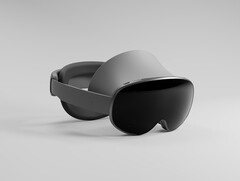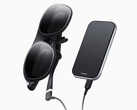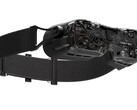Samsung Display used Display Week 2025 to preview a new generation of RGB OLEDoS panels intended for extended-reality headsets. The company’s roadmap now stretches beyond the 5,000-nit prototype shown last year, underscoring a strategy that marries extreme pixel density with record-setting luminance.
The headline exhibit was a 1.4-inch, 5,000 PPI screen that packs more pixels than an 8K television into an area roughly the size of a smartwatch. Despite that footprint, it reaches 15,000 nits peak, supports 120 Hz, and covers 99 percent of the DCI-P3 gamut—figures tuned for the demanding optics of mixed-reality goggles rather than living-room TVs.
Samsung also showed a 4,200 PPI variant that pushes brightness to 20,000 nits, the highest value yet reported for an RGB OLEDoS panel. Earlier iterations capped out at 5,000 nits in 2024 and 10,000 nits at CES 2025, so the latest prototype doubles the luminance achieved only five months ago.
Both panels use direct-emission red, green, and blue sub-pixels deposited on a silicon backplane. This approach—often called micro-OLED or OLEDoS—avoids the white-OLED-plus-filter stack found in current Apple and Sony headset displays, boosting efficiency, color saturation, and brightness. Samsung’s gains draw on technology acquired with eMagin in 2023 and include sample resolutions of 3,888 × 3,888 and a native 5K variant, each covering the full DCI-P3 space.
Brightness numbers alone mean little without context. Modern pancake optics waste roughly 90 percent of incoming light, and low-persistence, a technique used to reduce motion blue, further cut perceived luminance. A 5,000-nit micro-OLED delivers around 100 nits on the eye; Samsung’s 15,000- and 20,000-nit panels could raise that to roughly 300–400 nits or let manufacturers shorten duty cycles to tighten motion clarity without sacrificing brightness.
Even so, true-RGB micro-OLED remains costly to manufacture, so Samsung describes the new panels as R&D units. Commercial headsets shipping later this year will still rely on Sony’s updated 4K micro-OLED. Still, Samsung’s prototypes suggest that the short-term ceiling for XR image quality is rising quickly, even if the cost of materials may increase.















